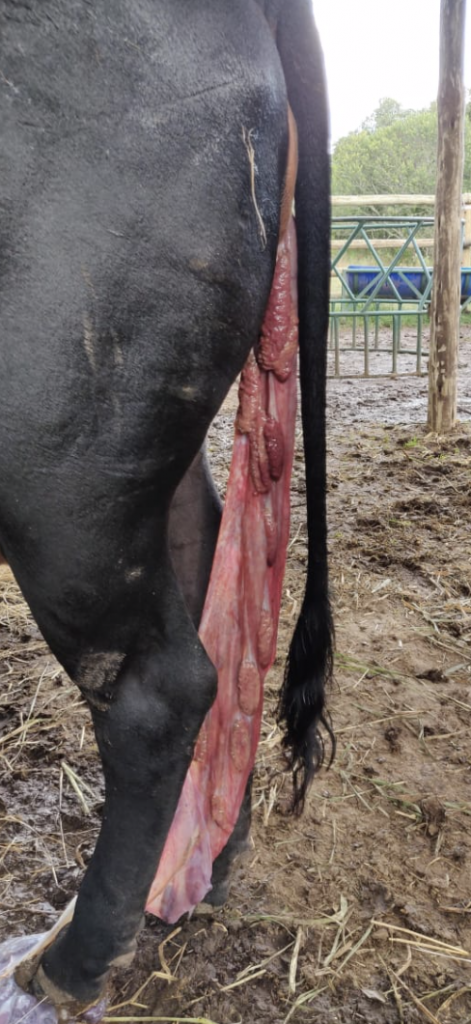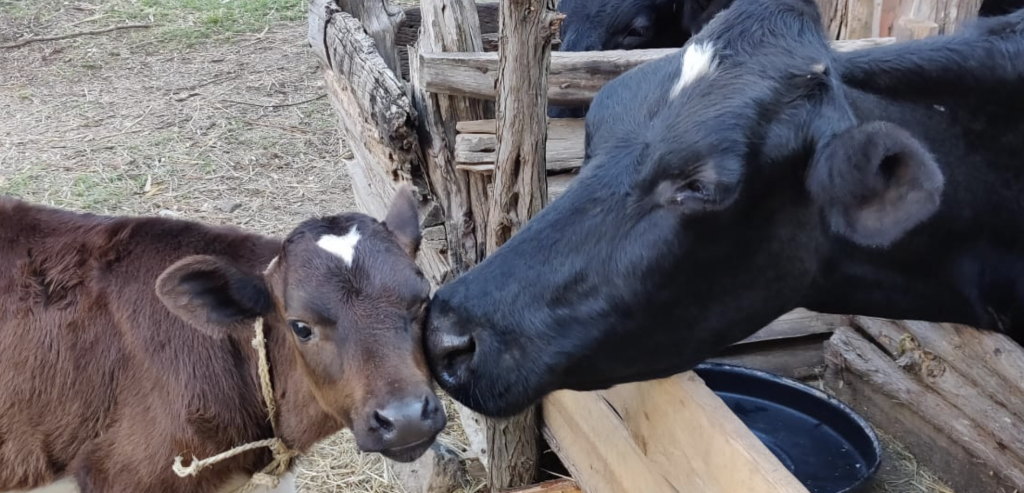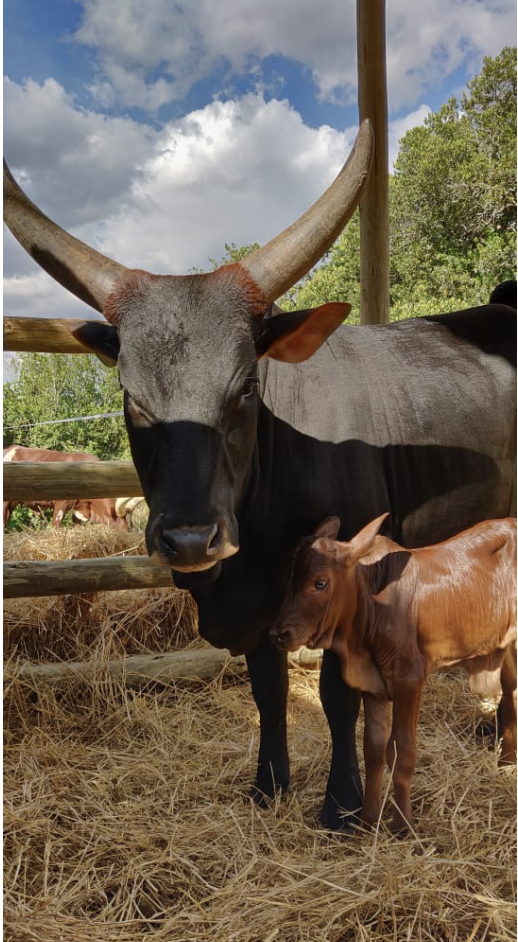Credits: Biovision-Infonet

Calving Preparation
Dry the cow 2 months before expected calving. If she had no trouble with mastitis nor high somatic cell counts, there is no need to consider mastitis treatment. Observe her carefully throughout the dry period for signs of mastitis and other diseases. Try to keep the cow in a good body condition (score 3.5 out of 5, see above). A few weeks before the expected calving team her up by giving 2 to 4 kg of energy rich feed per day. Introduce in-calf heifers to the dairy unit before calving for them to get used to the environment. Do not disturb the group dynamics close to calving by introducing new animals to the group. Normal calving will occur 280+-10 days from last service.

(c) CAIS, Kenya
A cow calendar is a very useful tool in estimating calving dates of cows. The cow calendar consist of two separate but connected discs, the lower disc displaying the days of the year and the upper disc the interval between service date, repeat heat cycles, and calving date. It also shows when a cow should be dried and steamed up (stop milking and start feeding to prepare for normal calving and highest possible milk production). Such calendars can be ordered from CAIS (Central Artificial Insemination Station) Kenya. (Contact: CAIS – Tel: 4181325/6 – Email: info@cais.co.ke)
Calving Signs
The animal will portray the following signs before calving:
- Swelling of the udder
- Clear discharge of mucus from the enlarged vulva
- Loss of appetite and restlessness
- Relaxation of ligaments on both sides of tail
Precautions during calving
The following precautions should be observed before calving to ensure safety of the mother and its calf:
- Pay special attention to calving heifers as they are likely to have problems
- Disinfect hind quarters before calving
- Ensure that after the calf is born it is licked by the dam and is free of mucus at the nostrils, mouth and eyes
- Naval cord should be cut and tied then disinfected with iodine
- The newborn calf should be allowed to suckle the mother the first 24 hours to get colostrum. Make sure that the calf gets colostrum within two hours after being born
- Placenta (afterbirth) should come out within 12 hours after calving
- A veterinary doctor should be called in case of a difficult calving or retained placenta


Credit:Su Kahumbu
